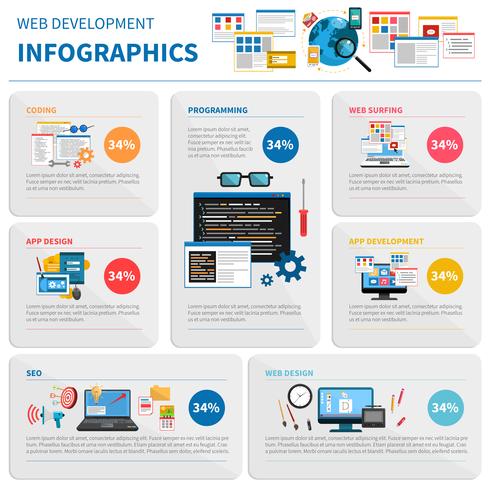The Development Of Internet Site Design: From Past To Existing
The Development Of Internet Site Design: From Past To Existing
Blog Article
Created By-Rasmussen Dalby
In the past, internet sites were simple and focused on info. Navigation was direct, and layout was for desktops. Now, user experience is vital. Data guides layouts for very easy navigating. Responsive formats fit different gadgets. Today, dark setting minimizes stress, and minimal menus boost navigating. Interactive functions engage users, and strong visuals attract attention. AI combination boosts interaction. See exactly how style has developed to enhance your on the internet trip.
Early Days of Website Design
In the very early days of website design, simplicity reigned supreme. Websites were standard, with minimal shades, font styles, and formats. The emphasis was on offering info instead of flashy visuals. Customers accessed the net with slow-moving dial-up links, so speed and performance were crucial.
Navigating food selections were straightforward, commonly located on top or side of the page. Sites were developed for desktop, as mobile browsing wasn't yet widespread. Content was king, and developers prioritized simple readability over complex style components.
HTML was the primary coding language made use of, and developers needed to function within its constraints. Animations and interactive attributes were marginal compared to today's criteria. Internet sites were static, with little vibrant content or tailored customer experiences.
Surge of User-Focused Layout
With the development of web site style, a change towards user-focused layout concepts has become significantly famous. Today, producing web sites that prioritize user experience is critical for involving visitors and accomplishing service goals. User-focused layout includes understanding the requirements, choices, and behaviors of your target audience to tailor the web site's design, material, and features accordingly.
Designers currently carry out detailed study, such as user surveys and use testing, to gather insights and responses straight from customers. Check This Out -driven technique assists in creating intuitive navigation, clear calls-to-action, and visually enticing user interfaces that reverberate with visitors. By putting the user at the center of the style procedure, web sites can provide an extra customized and pleasurable experience.
Receptive layout has also emerged as an essential aspect of user-focused layout, making certain that internet sites are enhanced for numerous devices and screen sizes. This adaptability boosts ease of access and use, dealing with the diverse ways individuals interact with web sites today. Fundamentally, the rise of user-focused style symbolizes a change in the direction of creating electronic experiences that prioritize the demands and expectations of completion customer.
Modern Trends in Web Design
Discover the latest trends forming website design today. One noticeable pattern is dark mode style, supplying a sleek and modern look while decreasing eye pressure in low-light atmospheres. Another key trend is minimal navigating, simplifying food selections and enhancing individual experience by focusing on essential elements. Incorporating micro-interactions, such as animated switches or scrolling results, can produce an extra interesting and interactive web site. Receptive layout remains essential, making sure smooth customer experiences across numerous devices. Furthermore, using bold typography and asymmetrical layouts can include visual interest and accentuate details material.
Incorporating https://www.adp.com/spark/articles/2022/02/small-business-marketing-tips-how-to-capitalize-on-the-big-game-buzz.aspx , like chatbots for customer assistance or customized suggestions, enhances individual engagement and improves processes. Ease of access has additionally come to be a considerable fad, with developers focusing on inclusive layout practices to cater to varied customer demands. Welcoming sustainability by enhancing internet site efficiency for speed and effectiveness is another arising pattern in web design. Collaborating with individual feedback and information analytics to iterate and enhance style continually is necessary for remaining pertinent in the ever-evolving digital landscape. By embracing these modern fads, you can develop a visually enticing, easy to use internet site that reverberates with your audience.
Conclusion
As you review the development of site style from the early days to currently, you can see just how user-focused layout has actually ended up being the driving force behind modern-day fads.
Welcome the trip of modification and adaptation in web design, always keeping the individual experience at the center.
Stay current with the most up to date trends and innovations, and never ever stop progressing your method to create visually sensational and user-friendly web sites.
Advance, adapt, and produce - the future of website design remains in your hands.
